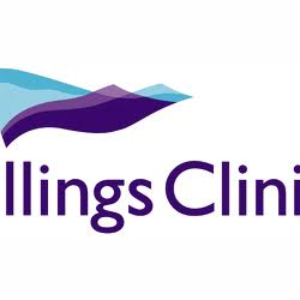By Evelyn Pyburn
It’s working far beyond their greatest expectations.
Adaptive Performance Center (APC) at 1420 Broadwater in Billings was opened two years ago as a gym aimed at melding physical exercise with mental health, a magic elixir that its founders discovered works for military veterans. APC is available to help disabled veterans in overcoming their injuries, and for other veterans seeking a haven in dealing with the stress of everyday life, and for active military keeping in shape and wanting to enjoy the company of like-minded people.
APC started as a new idea with no guidelines or guarantees or members. It’s been a challenge in finding how to best operate the facility, determine policies and resolve problems as they have manifested themselves. Today the non-profit organization has almost 500 members and “we see magic happen every single day,” says co-founder Karen Pearson.
So successful has APC been that “it makes us feel we can’t open more gyms fast enough,” said Pearson and co-founder Mitch Crouse. Opening a second location is exactly their plan. Before the year is out they hope to have an APC gym in Helena. Everything is in place, except for closing on the property. They expect to be able to open within nine months after that.
Helena has the second highest population of veterans in Montana after Billings. Both communities’ population is 10 to 13 percent veterans. In Billings that’s about 13,000 people.
APC is the vision of Karen Pearson, a Licensed Professional Counselor and Clinical Certified Personal Trainer, and Mitch Crouse, a Certified Personal Trainer. In each of their experiences in providing physical training for people, who have had traumatic situations to deal with, they realized that physical exercise was hugely beneficial in that process. As Crouse frequently reiterates, “Move your body, heal your mind.”
Crouse learned that reality first-hand in struggling to recover from a severe injury he suffered in a car accident. Pearson recognized the connection in dealing with patients who were veterans trying to integrate back into families and adapt to regular life after serving in the military. She saw them struggle with PTSD and knew those, who believing there was no hope, committed suicide. Recognizing how greatis their challenge, she became dedicated to somehow find a way to help them – having a gym became the goal.
The effectiveness of APC is exceeding anything the duo ever imagined. “Every week we have people who achieve some physical or mental or personal goal,” says Pearson.
The gym is almost a “front” for helping the veterans get the support and connection with other veterans and military people that they need, explains Pearson. And, often it just happens, as they regularly attend to work out. The gym becomes a safe and comfortable place for them, where they find others who understand.
Pearson and Crouse relate about one day, not long after opening, that a Vietnam veteran came in and signed up, and then sat down in the general lobby area, which is furnished with inviting easy chairs and couches and coffee tables. A little later, a younger veteran of Desert Storm came in and joined him. And, shortly thereafter, there arrived a young woman currently serving in the National Guard, and she, too, sat down and joined in the conversation. The three of them talked for almost an hour as though they had always known each other. “They didn’t have to know each other,” said Pearson, “They all understood what they were talking.about”
Pearson and Crouse see things like that unfold all the time.
They enjoy their members and have discovered them to be “some of the most honest people….They are funny, knowledgeable, very smart and as strong as oxen, both physically and mentally, which is amazing considering the things they have to deal with or have seen,” enthused Pearson.
There are moments that Pearson’s experience as a mental health counselor is crucial. Every once in a while a client has a meltdown, and it is important to know how to handle such situations. Part of developing APC is in the experiences that occur and developing the protocols necessary, so that all the staff knows what to do. Besides Crouse and Pearson, APC employs two other supporters – Richard Shepard, manager; and Andrea Wright, Board President.
As they move into opening additional centers, it will be the experiences and practices that they learn at APC in Billings and the training and protocols they develop that they will introduce as standards of practice for all their centers.
They are being asked to locate centers in other areas of the state, but they hope their next expansion will be to locations outside Montana. People in Colorado Springs have an interest in opening an APC and so does another group in Hampton Roads, VA. Representatives from both locations have been to Billings to tour the APC facility.
Crouse said that in choosing the communities in which they will locate they will look at the capacity of the community to support a gym and the passion and commitment they see in the people involved.
Anyone who has their D2-14 discharge papers can join ACP. It doesn’t matter where or when or how they served, they simply have to have served. The cost is $19.95 a month, but no one is turned away because of inability to pay. In fact, APC has numerous individuals, businesses and organizations, who have will pay the dues of anyone who can’t afford to do so – people like The Breakfast Flakes and others who simply walk in the door, hand them a cash gift card and say “please use this to help pay somebody’s membership.”
Blue Cross Blue Shield has a standing community match offer. Other companies too match any donation their employees make.
Between 35 and 40 percent of their members depend on such contributions, and they are very appreciative. One veteran who had to depend on a “scholarship”, got himself on his feet and started a business and is now contributing to support the dues for others.
They also get other generous gifts which have allowed them to expand and add more equipment to the gym.
Their membership range in age from 17 to 88 years. The teenagers are recruits who are “delayed entry candidates” for boot camp. The Air Force, the Army and the Marines have engaged APC to do physical training for the recruits while they are waiting to go to boot camp. Crouse says with obvious satisfaction, that they hear back from their trainees that boot camp is easy compared to the training at APC.
Not only have they found great support from the local offices of the military, but also the various service organizations that provide support for veterans have discovered that APC is good place through which to reach out to veterans.
Crouse said that they hope to establish a foundation for the center to cover its basic needs on an on-going basis. The biggest cost in opening a center is in getting it established. Getting a location, purchasing the equipment, etc.
After that the costs become less and remain steady.
During their “spare” time, Pearson and Crouse have been involved in helping in producing a documentary about the suicide rate among veterans. It focuses on showing civilians “how amazing our veterans really are.” It aims to help civilians understand what the veterans have seen and have experienced and how “gut wrenching” their memories are. But more importantly, the film explains what people can do to help. There is so much that people can do, said Pearson, and it can be done locally. The biggest problem is in finding the veterans who don’t know that there is help.
More details about the premier of the documentary will soon be available. Premiers will be held in several Montana communities including Billings.



